2021 AMS Short Course3D Printing: Challenges and Applications
Virtual, January 3-4, 2022
Read a feature story by Scott Hershberger about this Short Course, which will be published in Notices.
This two-day course combines seven introductory lectures and tutorials with two workshops that offer a hands-on experience with 3D printing and model design. These will be complemented by an exhibition of 3D printed art and visualizations and a concluding panel discussion. Our speakers comprise a diverse team of multidisciplinary experts including members of underrepresented groups and early career researchers.
The short course was held virtually Jan 3-4 with talks and panels over Zoom and workshops via Gather. It will be organized on the Short Course Wiki.
Organizers:
Maria Trnkova
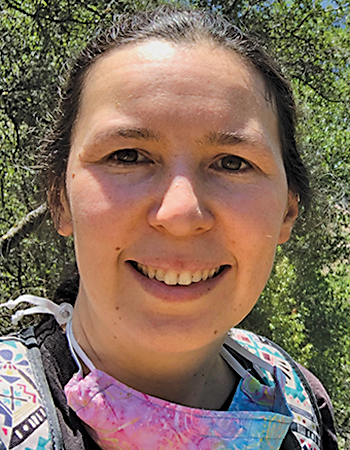
Andrew Yarmola
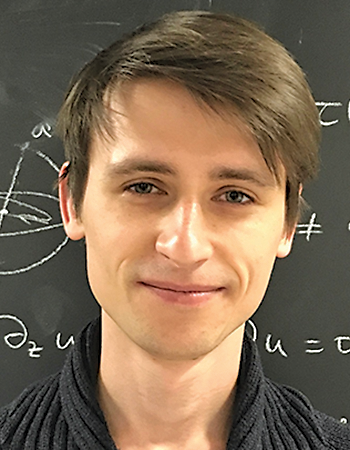
Acknowledgments
We thank Wolfram for providing free 90-licenses for Wolfram|One that includes Mathematica on Desktop (Wolfram Desktop) and Mathematica on the Cloud (Wolfram Cloud) for the registrants of this course.
We would also like to extend our deepest thanks to your speakers and panelists, please see their bios below. We would also like to extend a special thanks to local organizations and volunteers for their help, including the Slip Rabbit Studio and the Seattle chapter of Wi3DP. These local organizations often have open studio events and meetups, so we hope you’ll get to visit them next time you are in Seattle.
Introduction
Centered around the idea of additive manufacturing, as opposed to subtractive methods, 3D printing has quickly become a powerful tool for prototyping, design, and visualization and has opened up many new avenues in art, education, engineering, and applied sciences. Even as access to 3D printing facilities is quickly becoming ubiquitous across college campuses, the process of taking a mathematical idea and making it into a printable model presents a big hurdle for most mathematicians. Alongside two hands-on workshops which tackle this task, the Short Course will focus on the role of 3D printing in mathematical art, education, and visualization together with a thorough discussion of the challenges in current approaches to the technology. The main objectives of the course are to build skills and confidence with 3D modeling and to provide a springboard for future engagement with 3D printing.
The course is oriented towards a broad audience and requires an elementary background in undergraduate mathematics. Participants will be able to use their own computers and tablets for several stages of the training sessions through easily accessible software. Instructions and guides on the software will be available prior of the Short Course. Participants are also encouraged to bring their model ideas and visualizations including objects from geometry, topology, combinatorics, dynamical systems, algebra, and any other area of mathematics.
Topics and Lectures
The primary goal for the first day will be to introduce participants to 3D printing concepts and to provide a hands-on experience with printing their first model. The first two lectures, “Visualization of Mathematics with 3D Printing” and “Introduction to 3D Printing,” will showcase existing works and give a detailed dive into printing technology. The afternoon of day one will be devoted to a tutorial of printing software aimed at learning slicing, infill, supports, and model clean-up techniques, followed by a workshop where participants will collaborate to prepare a model for printing. Each group will be able to pick up their printed model at the end of the course. Day one will conclude with an Art Exhibition of works by the speakers, participants, and local artists. Participants should contact the organizers if they would like to exhibit their work.
Day two will begin with a discussion of the speakers’ experiences with “3D Printing and the Classroom” as well as an overview of projects and efforts at other institutions. This will be followed by a lecture on the “Mathematics and Challenges behind 3D Printing,” which will discuss the geometric and algorithmic aspects and constraints of current 3D printing technologies. The afternoon will begin with a lecture on “Designing a Model with Mathematics” to illustrate the process of going from a mathematical concept, to a visualization, and finally to a printable model. The tutorial for that day will focus on using different software tools and techniques for building and editing mathematically-inspired models. During the workshop, participants will get help and guidance while designing a model themselves or in groups. Several guided examples will be provided, but participants are always encouraged to be creative and work on their own ideas
The course will conclude with a Panel Discussion with speakers and outside experts. The panelists will speak on their motivations, successes, and failures in working with printing technologies and mathematical visualizations from artistic, research, and pedagogical perspectives. They will also discuss available resources, training, and objects that desperately need to be printed. The panel will include a Q&A and discussion with participants.
Speakers
Silviana Amethyst University of Wisconsin-Eau Claire
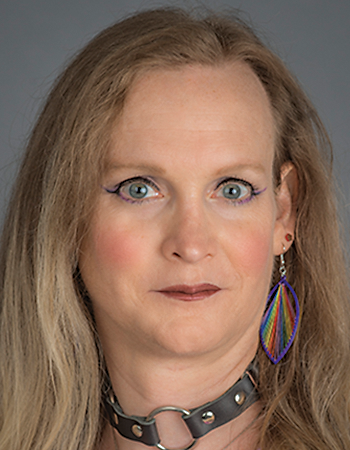 Dr. Silviana Amethyst is a visualizing mathematician at the University of Wisconsin-Eau Claire. Her favorite subjects are singular algebraic surfaces. Lately, she's been getting into hybrid printed and electronic projects. Silviana's love of the Barth Sextic knows no bounds. She rejects white supremacy in all forms.
Dr. Silviana Amethyst is a visualizing mathematician at the University of Wisconsin-Eau Claire. Her favorite subjects are singular algebraic surfaces. Lately, she's been getting into hybrid printed and electronic projects. Silviana's love of the Barth Sextic knows no bounds. She rejects white supremacy in all forms.
Lecture #5: Augmenting 3D printed objects for interactivity
3D printing is a wonderful way to illustrate mathematics. We get tangible objects. By augmenting them with additional features, we can make our pieces interactive. This talk will present a family of similar objects, with various features for interactivity. The major addition to the plastic is electronics, powered by a student-programmed Arduino. By adding effort beyond the build platform, we gain access to a world of projects for show, outreach, and teaching.
David BachmanPitzer College
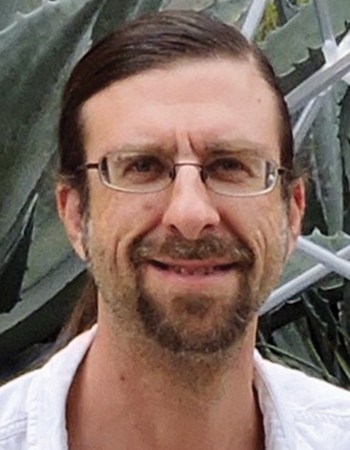 David Bachman is a professor of Mathematics at Pitzer College in Claremont, CA. He received a PhD in 1999 from the University of Texas at Austin, and has since published over 20 research articles, three books, and received two grants from the National Science Foundation. Eleven years ago, David's background in mathematics and his affinity for working with his hands converged when he began to experiment with 3D printing. Since then he has created unique two and three-dimensional pieces by using several CAD modeling packages (most notably, Rhino 3D and Grasshopper), a variety of laser cutters, pen plotters, and 3D printers, and a garage full of tools. David is a certified Rhino specialist (Levels 1 and 2) and has written a book on Grasshopper, the visual scripting plug-in for Rhino.
David Bachman is a professor of Mathematics at Pitzer College in Claremont, CA. He received a PhD in 1999 from the University of Texas at Austin, and has since published over 20 research articles, three books, and received two grants from the National Science Foundation. Eleven years ago, David's background in mathematics and his affinity for working with his hands converged when he began to experiment with 3D printing. Since then he has created unique two and three-dimensional pieces by using several CAD modeling packages (most notably, Rhino 3D and Grasshopper), a variety of laser cutters, pen plotters, and 3D printers, and a garage full of tools. David is a certified Rhino specialist (Levels 1 and 2) and has written a book on Grasshopper, the visual scripting plug-in for Rhino.
Lecture #6: Tutorial of model design and Workshop #2
This tutorial will demonstrate the software and tools used to take a mathematical idea, describe it analytically, and encode it as a 3D model. We will discuss three main approaches and tools for model creation: programmatic generation (scripting), mesh based sculpting, and NURBS modeling. The presentation will conclude with ideas and suggestions for the next workshop.
Gabriel Dorfsman-HopkinsUniversity of California, Berkeley
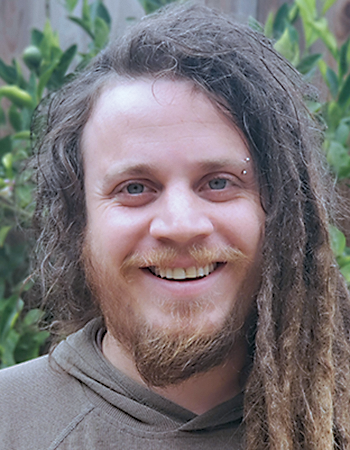 Gabriel Dorfsman-Hopkins (he/they) is an RTG Postdoctoral Scholar at the University of California, Berkeley, specializing in arithmetic and p-adic analytic geometry. They also have research interests along the intersection of art and math, working with 3D printing, fiber arts, and electronics, with an interest in interactive models and installations. Before arriving in Berkeley, Gabriel was a postdoc in residence at ICERM for the semester program titled "Illustrating Mathematics." Gabriel received their PhD from the University of Washington in 2019, with a dissertation exploring foundations of perfectoid geometry, and while at UW, they managed the digital fabrication lab space in the Washington Experimental Math Lab.
Gabriel Dorfsman-Hopkins (he/they) is an RTG Postdoctoral Scholar at the University of California, Berkeley, specializing in arithmetic and p-adic analytic geometry. They also have research interests along the intersection of art and math, working with 3D printing, fiber arts, and electronics, with an interest in interactive models and installations. Before arriving in Berkeley, Gabriel was a postdoc in residence at ICERM for the semester program titled "Illustrating Mathematics." Gabriel received their PhD from the University of Washington in 2019, with a dissertation exploring foundations of perfectoid geometry, and while at UW, they managed the digital fabrication lab space in the Washington Experimental Math Lab.
Lecture #3: Tutorial and demonstration of 3D printing software and tools and Workshop #1
In this talk we will give a down to earth demonstration of how to use an extrusion-based 3D printer, going through an entire example of how to turn a digital model into a physical one. We will go through the process of preparing a model for printing, explaining how to make sure a digital model is printable, and giving tips on how to recognize and troubleshoot common issues that arise.
Elisabetta MatsumotoGeorgia Institute of Technology
 Elisabetta (Sabetta) Matsumoto is an assistant professor in the School of Physics at Georgia Institute of Technology. Her physics research centers around the relationship between geometry and material properties in soft systems, including liquid crystals, 3D printing and textiles. Her lab studies knitted textiles from the point of view of knot theory and as an additive manufacturing technique. She is also interested in using sewing, 3D printing and virtual reality in mathematical art and education.
Elisabetta (Sabetta) Matsumoto is an assistant professor in the School of Physics at Georgia Institute of Technology. Her physics research centers around the relationship between geometry and material properties in soft systems, including liquid crystals, 3D printing and textiles. Her lab studies knitted textiles from the point of view of knot theory and as an additive manufacturing technique. She is also interested in using sewing, 3D printing and virtual reality in mathematical art and education.
Lecture #4: Mathematics and challenges behind 3D printing
3D printing is still a developing technology that faces many challenges, mainly mechanical, material, computational and algorithmic. The process of printing can be divided into three steps each offering its own mathematical problems: model design, preparation for printing via slicing and infill algorithms, and physical process of layer deposition in the printer. Optimizing these steps for printing time, cost, and physical qualities of the final product drives many challenges in this area. The printing processes itself can be quite complicated and prone to error. A common problem is a loss of alignment leading to splitting layers. Error correcting for such issues is an active field of research involving automatic feedback mechanisms and machine learning. Materials and dynamic properties of printed objects (i.e. their 4D behavior) are fundamental to successful uses in both industry and research. The goal of this lecture will be to introduce and explain approaches to these problems and discuss open questions and ideas.
Henry SegermanOklahoma State University
 Henry Segerman received his master's in mathematics from the University of Oxford, and his Ph.D. in mathematics from Stanford University. He is an associate professor in the Department of Mathematics at Oklahoma State University. His research interests are in three-dimensional geometry and topology, and in mathematical art and visualization. In visualization, he works in 3D printing, spherical video, virtual reality, and augmented reality. He is the author of the book Visualizing Mathematics with 3D Printing.
Henry Segerman received his master's in mathematics from the University of Oxford, and his Ph.D. in mathematics from Stanford University. He is an associate professor in the Department of Mathematics at Oklahoma State University. His research interests are in three-dimensional geometry and topology, and in mathematical art and visualization. In visualization, he works in 3D printing, spherical video, virtual reality, and augmented reality. He is the author of the book Visualizing Mathematics with 3D Printing.
Lecture #1: Visualization of mathematics with 3D printing
I will give an overview of the many uses of 3D printing in mathematical visualization and mathematical art. These include works illustrating symmetry, polyhedra, projections of higher-dimensional objects, fractals, knots, and surfaces. I will also discuss generative work coming from dynamical systems and computational biology. Finally, I will talk about mechanisms and puzzles, both of which take advantage of the physicality of 3D printed objects to give experiences that cannot be matched by computer generated renders and animations
Bethany WeeksBoeing Additive Manufacturing (BAM)
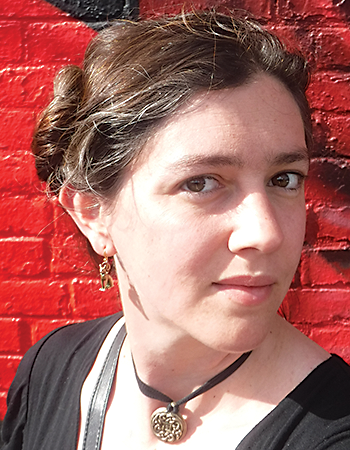 Bethany Weeks has been passionate about the additive manufacturing (AM) industry for almost a decade. She was a founding member of the University of Washington's 3D printing student group and helped create the world's first 3D printed full-sized boat using 100% post-consumer plastic as material. She is currently an engineer performing research in AM at Boeing Additive Manufacturing (BAM), identifying the capabilities of the technology and releasing design guidance for how to incorporate AM into production. Prior to Boeing, she was a R&D engineer at Stratasys, tasked with optimizing the printing parameters for new materials and FFF systems.
Bethany Weeks has been passionate about the additive manufacturing (AM) industry for almost a decade. She was a founding member of the University of Washington's 3D printing student group and helped create the world's first 3D printed full-sized boat using 100% post-consumer plastic as material. She is currently an engineer performing research in AM at Boeing Additive Manufacturing (BAM), identifying the capabilities of the technology and releasing design guidance for how to incorporate AM into production. Prior to Boeing, she was a R&D engineer at Stratasys, tasked with optimizing the printing parameters for new materials and FFF systems.
Lecture #2: Introduction to 3D printing
In this talk we will discuss the history of 3D printing and the revolutionary shift to additive manufacturing (AM), which differs dramatically from traditional manufacturing, allowing for fast prototyping and production of small or complicated pieces. Current applications include industry, dentistry and medicine (crowns, custom hearing aids, implants, prosthetics), footwear, architecture, aerospace and home products. In addition, AM is considered to be more eco-friendly than traditional because it uses material more efficiently. The lecture will include a detailed discussion of the variety of printer designs (extrusion, stereolithography, selective laser melting, etc.), fabrication materials (plastic, plaster, metal, glass, ceramic and even food), and solidifying process (drying, laser cut, and thermal.
Timea TihanyiInterdisciplinary Visual Arts, Univ. of Washington
 Timea Tihanyi is a Hungarian born interdisciplinary visual artist and ceramist living and working in Seattle, Washington. Tihanyi holds a Doctor of Medicine degree from Semmelweis University, Budapest, Hungary and an MFA in Ceramics from the University of Washington. Tihanyi’s work has been exhibited in the United States, Brazil, Australia, Denmark, Spain and the Netherlands. Tihanyi is a Teaching Professor in the Interdisciplinary Visual Arts program at the University of Washington. She is the founder and director of Slip Rabbit, a unique mentoring space for experimentation and learning with ceramic 3D printing at the intersections of art, design, architecture, math, science and engineering. Tihanyi collaborates with mathematicians frequently. She is the author of Making and Breaking Rules, a Technoceramist's Adventures with Mathematical Thinking. Her latest exhibition, Object Permanence, will open on January 21st, 2022 at the Bellevue Arts Museum.
Timea Tihanyi is a Hungarian born interdisciplinary visual artist and ceramist living and working in Seattle, Washington. Tihanyi holds a Doctor of Medicine degree from Semmelweis University, Budapest, Hungary and an MFA in Ceramics from the University of Washington. Tihanyi’s work has been exhibited in the United States, Brazil, Australia, Denmark, Spain and the Netherlands. Tihanyi is a Teaching Professor in the Interdisciplinary Visual Arts program at the University of Washington. She is the founder and director of Slip Rabbit, a unique mentoring space for experimentation and learning with ceramic 3D printing at the intersections of art, design, architecture, math, science and engineering. Tihanyi collaborates with mathematicians frequently. She is the author of Making and Breaking Rules, a Technoceramist's Adventures with Mathematical Thinking. Her latest exhibition, Object Permanence, will open on January 21st, 2022 at the Bellevue Arts Museum.
Panel #2: Discussion with the speakers on 3D printing, research, and art
Schedule
Day 1 will begin on Gather so that participants can make sure they can connect and get used to the interface. We will then have two lectures on Zoom followed by a break/expo on Gather where speakers can show off some of their models and work to interested participants and answer questions. The second half of Day 1 runs on Zoom until we switch to Workshop 1.
Day 2 we will start on Zoom with with a lecture followed by our second panel. This will be followed by a break/expo where we hope participants can show off some of their work! The second half of the day will include our final lecture and tutorial followed by a model design workshop.
* All times are in PST *
MONDAY
|
Day 1 Morning |
|
|
8:00 - 8:15 am |
Introduction / Meetup on Gather |
|
8:20 - 9:20 am |
Lecture #1: Visualization of Mathematics with 3D printing Henry Segerman, Oklahoma State University |
|
9:30- 10:30 am |
Lecture #2: Introduction to 3D printing Bethany Weeks, Boeing’s Additive Manufacturing Vertical |
|
10:30 - 11:30 am |
Coffee & Speaker Model Expo on Gather |
|
Day 1 Afternoon |
|
|
12:00 - 12:50 pm |
Panel #1: 3D printing and the classroom A discussion of the successes and failures of incorporating 3D printing in education. |
|
1:00 - 2:00 pm |
Lecture #3: Tutorial and demonstration of 3D printing software and tools. Gabriel Dorfsman-Hopkins, UC Berkeley |
|
2:00-3:30 pm |
Workshop #1 on Gather Hands-on experience with 3D models, design, and slicing software. |
TUESDAY |
|
|
Day 2 Morning |
|
|
8:00 - 9:00 am |
Lecture #4: Mathematics and challenges behind 3D printing Sabetta Matsumoto, Georgia Tech |
|
9:10 - 10:10 am |
Panel #2: 3D printing design and art Discussion with the speakers and visual artist Timea Tihanyi on 3D printing, research, and art. |
|
10:10 - 11:00 am |
Coffee & Participant Model Expo on Gather |
|
Day 2 Afternoon |
|
|
12:00 - 12:50 pm |
Lecture #5: Augmenting 3D printed objects for interactivity Silviana Amethyst, University of Wisconsin-Eau Claire
|
|
1:00 - 2:00 pm |
Lecture #6: Tutorial of model design David Bachman, Pitzer College |
|
2:00 - 3:30 on |
Workshop #2 on Gather Participants will build and design an algorithmic 3D model in small groups. |
References
- David Bachman, Grasshopper: Visual Scripting for Rhinoceros 3D, Industrial Press, 2017.
- E. Canessa, C. Fonda, and M. Zennaro, Low-cost 3D Printing for Science, Education, and Sustainable Development, ICTP Science Dissemination Unit, 2013, http://sdu.ictp.it/3d/book.html.
- Diana J. Davis, Illustrating Mathematics, American Mathematical Society, 2020.
- Stephen K. Lucas, Evelyn Sander, and Laura Taalman, Modeling Dynamical Systems for 3D Printing, Notices of the American Mathematical Society 67 (2020), no. 11.
- Stepan Paul, 3D Printed Manipulatives in a Multivariable Calculus Classroom, Primus 28 (2018), no.9, 821-834.
- Ben Redwood, et. al., The 3D Printing Handbook: Technologies, Design, and Applications, 3D Hubs, 2018.
- Henry Segerman, Visualizing Mathematics with 3D Printing, Johns Hopkins University Press, 2016.
Photograph of Silviana Amethyst is courtesy of Shane Opatz; Photograph of Gabriel Dorfsman-Hopkins is courtesy of Meghan Maynard;Photograph of Sabetta Matsumoto is courtesy of Lucy Price; Photograph of Henry Segerman is courtesy of Sabetta Matsumoto; Photograph of Bethany Weeks is courtesy of Bethany Weeks.
- JMM Home
- Access to Virtual Platform
- General Instructions
- Policies and Statements
- General
- Broadcasting and Photographing
- MathSafe
- Scientific Program
- Virtual Program
- Index of Programs by Organization
- Invited Speakers - A Closer Look
- Timetable
- Child Care
- Child Care Grants
- Exhibits
- Exhibitor Spotlights
- Mathematical Art Exhibition
- Additional Exhibitor Events and Activities
- Prizes and Awards
- Prizes and Awards
- Professional Development
- AMS Short Course
- Dept Chairs Workshop
- PEPs
- Registration
- How to Register
- Registration Fees
- Frequently Asked Questions
- General
-
- Social Networking

